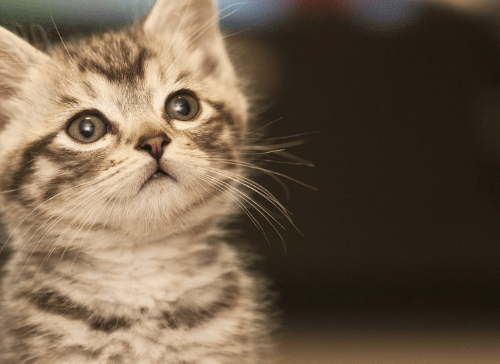Curious KittenQueen of Curiousity

Areas of expertise
- Far-sighted focus
- Extraordinary hearing
- Super-quick feet
- Feline flexibility
- A highly attuned sense of smell
Education
- MBA, Saint Louis Zoo University
- BS, Technical University of Denver Zoo
- PHD, Oakland Zoo University
The cat (Felis catus) is a domestic species of small carnivorous mammal. It is the only domesticated species in the family Felidae and is often referred to as the domestic cat to distinguish it from the wild members of the family. A cat can either be a house cat, a farm cat or a feral cat; the latter ranges freely and avoids human contact. Domestic cats are valued by humans for companionship and their ability to kill rodents. About 60 cat breeds are recognized by various cat registries. The cat is similar in anatomy to the other filed species: it has a strong flexible body, quick reflexes, sharp teeth and retractable claws adapted to killing small prey. Its night vision and sense of smell are well developed. Cat communication includes vocalizations like meowing, purring, trilling, hissing, growling and grunting as well as cat-specific body language. A predator that is most active at dawn and dusk (crepuscular), the cat is a solitary hunter but a social species. It can hear sounds too faint or too high in frequency for human ears, such as those made by mice and other small mammals. It secretes and perceives pheromones. Cats were first domesticated in the Near East around 7500 BC. It was long thought that cat domestication began in ancient Egypt, where cats were venerated from around 3100 BC. As of 2021, there are an estimated 220 million owned and 480 million stray cats in the world. As of 2017, the domestic cat was the second-most popular pet in the United States, with 95 million cats owned. In the United Kingdom, 26% of adults have a cat with an estimated population of 10.9 million pet cats as of 2020.
Cats are believed to be the only mammals who don’t taste sweetness. Cats are nearsighted, but their peripheral vision and night vision are much better than that of humans. The domestic cat has a smaller skull and shorter bones than the European wildcat.[58] It averages about 46 cm (18 in) in head-to-body length and 23–25 cm (9–10 in) in height, with about 30 cm (12 in) long tails. Males are larger than females.[59] Adult domestic cats typically weigh between 4 and 5 kg (9 and 11 lb)
Fascinating Cat Facts:
1. In terms of development, the first year of a cat’s life is equal to the first 15 years of a human life. After its second year, a cat is 25 in human years. And after that, each year of a cat’s life is equal to about 7 human years.
2. Cats can rotate their ears 180 degrees.
3. The hearing of the average cat is at least five times keener than that of a human adult.
4. In the largest cat breed, the average male weighs approximately 20 pounds.
5. Domestic cats spend about 70 percent of the day sleeping. And 15 percent of the day grooming.
6. A cat cannot see directly under its nose.
7. Most cats have no eyelashes.
8. Cats have five toes on each front paw, but only four on the back ones. It’s not uncommon, though, for cats to have extra toes. The cat with the most toes known had 32—eight on each paw!
9. Some believe that if you dream about a white cat, good luck will follow.
10. Meows are not innate cat language—they developed them to communicate with humans!
